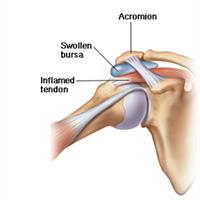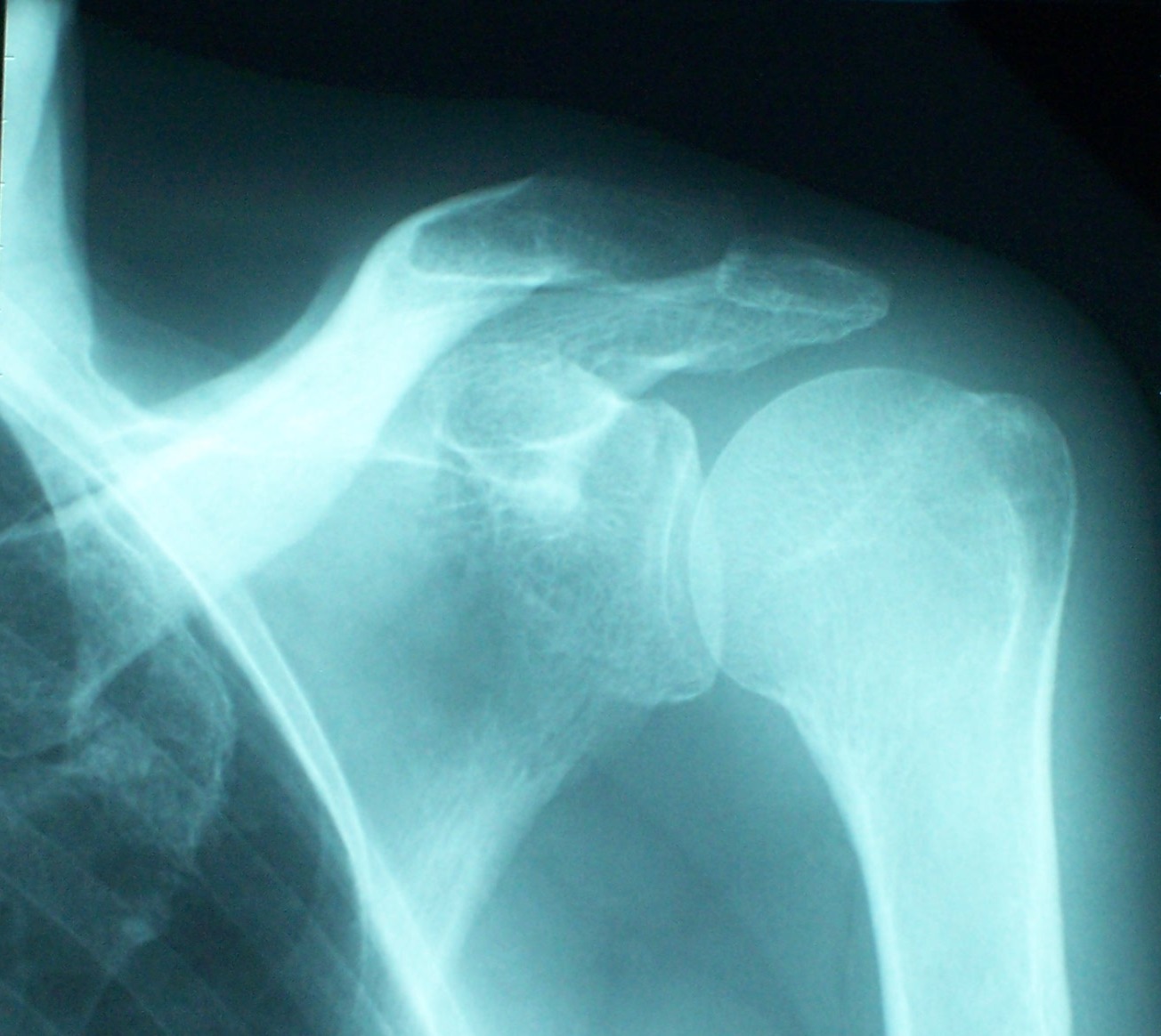nalco group
bone, muscle & joint pain physio
BOOK NOW / WHATSAPP ABOUT YOUR PAIN OR INJURY
- NOVENA 10 Sinaran Drive, Novena Medical Center #10-09, Singapore 307506
- TAMPINES 9 Tampines Grande #01-20 Singapore 528735
- SERANGOON 265 Serangoon Central Drive #04-269 Singapore 550265
Home > Blog > Physiotherapy > Conditions > Shoulder Pain > Left Shoulder Pain > Shoulder Bursitis Physiotherapy
Shoulder Bursitis Physiotherapy

Shoulder bursitis is a reaaaaaally common cause of shoulder pain, and we do treat a lot shoulder pain cases in our Phoenix physio clinics..
It happens when one of the bursa in our shoulder joint, which is a small fluid-filled sac, gets irritated and
inflamed.
There are a number of different bursa (pleural bursae) around the shoulder that may be affected, but the most common is the subacromial bursitis.
This subacromial bursitis will lead to shoulder pains which tends to develop gradually over time and may decrease shoulder movements where you lift your arm above your head or behind your neck or back.
When treated promptly and effectively with shoulder physiotherapy, symptoms of subacromial bursitis will usually resolve within a few weeks, but if ignored and left untreated, symptoms gradually get worse and worse and unfortunately may even cause secondary problems to develop.
first of all...What is Bursa?
A bursa is a smooth sac that contains synovial cells that produce lubricating fluid.
There are more than 150 bursa located throughout your
body which sit between muscles, tendons and/or bones!
What they do is that they function to provide
cushioning and a smooth surface allowing the tissues to glide freely and
fully as you move without any friction.
There are a number of bursae located around the shoulder joint as shown in the diagram including the:
- subacromial bursa
- subscapular bursa
- subcoracoid bursa
- coracoclavicular bursa
- supraacromial bursa
- subdeltoid bursa
Inflammation of any of these may cause pain.
The most common type of shoulder bursitis is subacromial bursitis which is often linked with shoulder impingement syndrome.
There are other bursa which is located around the shoulder blade which we will look at separately.
Causes of Shoulder Bursitis
Whenever any of our joint bursa gets irritated or injured, it will respond by producing more synovial fluid in an attempt to protect itself and the surrounding tissues which leads to inflammation.
This may be caused by:
1) Repetitive Friction
Repeated overhead movements such as
- racquet sports such as tennis or badminton
- painters repeatedly working on painting a ceiling
- sporting/hobbies such as baseball, cricket, swimming with a lot of throwing and overhead activities can cause repeated micro-trauma to the bursa.
This is the most common cause of shoulder bursitis.

2) Direct Injury
A sudden injury such as a fall onto the shoulder, or falling/landing on an outstretched hand can lead to bleeding and inflammation of the bursa.
Sometimes we can get direct injuries or blows in contact sports like boxing or basketball too.
3) Underlying Condition
Medical conditions such as
- rheumatoid arthritis
- gout (gouty arthritis) or
- a bacterial infection
can cause bursitis shoulder.
4) Surrounding Structures
If the space surrounding the bursa is reduced, such as the
subacromial space, this leads to an increased pressure placed on the bursa and it gradually irritates the bursa which over time
becomes inflamed.

This can happen as a result of
- arthritis (small lumps of bone known as osteophytes protrude into the space surrounding the bursa)
- poor posture (such as forward rounded shoulder position, common with people who work on computers all day)
- any muscle imbalance (one group of muscles shorter/weaker than the other) or
- inflammation of other surrounding structures
Whilst inflammation can develop in any of the bursae around the shoulder, again, the most common is subacromial bursitis.
The subacromial bursa is the shock-absorbing cushion that lies between the rotator cuff tendons and the acromion, the front part of the shoulder blade that forms a sort of bridge over the tendons, in what is known as the subacromial space.
Every time you lift and move your arm up, your rotator cuff tendons are gliding through this space so anything which narrows the space leads to irritation in the bursa and the tendons themselves.
Shoulder bursitis
is seldom found in isolation as it "typically turns up" with other
shoulder problems such as shoulder impingement or tendon tears – visit the shoulder impingement and rotator cuff tear for more info.
Shoulder Bursitis Symptoms
Shoulder bursitis can be vague to diagnose especially during the earlier stages because of the symptoms that can be a whole slew of other shoulder conditions.
We recommend you consider seeing our senior physiotherapists for a full shoulder assessment if you have any aches, pains or discomforts in your shoulder.
The symptoms of shoulder bursitis may vary from person to person but it typically include:
1) Shoulder Pain
In most cases, shoulder pain tends to gradually over time due to repeated friction over the shoulder bursa.
It tends to start off as a low level aching pain which gets more and more painful or worse with activities where your arm is raised over your head such as
- swimming
- golfing
- cricket
- baseball
- basketball
- lifting kids/children
- etc
The
pain is usually fairly localized (in one location) over the problem area but in many patients, over time,
the localized pain may start to travel down the arm, usually not past the elbow.
Of course if the shoulder bursitis was caused by an acute or sports direct injury, the shoulder pain will more likely be instant and more severe.
It can be very, very painful when any pressure goes into and through the shoulder, making even seemingly basic things like
- sleeping on your side
- stretching
- wearing long sleeve shirts, jackets, sweaters or cardigans
very uncomfortable.
Our patients with shoulder bursitis often
report that their sleep is frequently interrupted due to the shoulder pain that tends to wake them up and keeps them from falling into deep sleep.

If your shoulder pain associated with shoulder impingement, you may experience a painful shoulder movement arc, where as you lift the arm up it starts to get painful, but once you have passed or reached a certain height, the pain suddenly disappears
The reason for this is how the pressure changes through the bursa
as you move your arm – read more in the shoulder impingement section.
2) Shoulder Stiffness
Patients often report that their shoulder joints and movements may become limited, particularly reaching over head or behind your back/neck, affecting activities such as
- wearing long sleeve shirts, jackets or sweaters
- wearing or taking off your bra
- reaching for items on high shelf/places
becomes harder and painful as the condition progresses.
This shoulder joint stiffness tends to develop secondary to pain - what happens is that it hurts to move the arm so you use it less, compensating with the non-painful arm.
Technically, this is "okay" in the short term, as patients with shoulder pain will need to protect the bursa from further damage, but if you continue to not use or decrease the use of your affected arm for the long term, what happens is that the soft tissues aren't getting moved and stretched as they should so they naturally start to tighten which further limits movement and creates and more pain.
Shoulder physiotherapy is definitely one of the best ways to prevent and avoid this from happening, as well as to treat shoulder pains and tightness.
3) Shoulder Weakness
If your shoulder pain is causing you to favor your unaffected arm, unfortunately over time, the affected painful shoulder muscles may lose some strength.
This will lead to other problems as the weakness leads to subtle changes to the way the shoulder and shoulder blade move which can lead to further irritation.
Strengthening exercises from our senior physical therapist helps to prevent and correct this.
4) Note For Any Signs of Infection
There are a small risk for septic bursitis, where there is an infection in the bursa, usually due to bacterial infection to happen, and it will result in you
- feeling feverish and unwell with a high temperature and
- you may feel that your shoulder is often red and warm.
If you suspect you have a bursa or bursitic infection, you must see a doctor immediately as the infection will need to be treated with antibiotics (untreated infections can cause irreversible damages to the local structure within the shoulder).
Sometimes when bursa become inflamed, particularly with elbow or knee bursitis, it may get to a point where there is obvious swelling, like a small squashy orange, but this is uncommon in shoulder bursitis.
Shoulder Bursitis Treatment
Shoulder bursitis treatment goals are to
- reduce pain and inflammation
- prevent and correct any weakness and decreased movement at the shoulder
- prevent secondary problems developing such as shoulder impingement
- and
get you back to your life, work, responsibilities
There are a number of different shoulder bursitis treatment options:
1) Ye Good 'Ol Rest
It is important to identify and entirely avoid activities which aggravate your shoulder pain and shoulder bursitis, such as overhead movements. This is mainly to give your inflamed bursa a chance to heal.
If you keep ignoring your pain and pushing on into the pain, the friction over the bursa will keep continuing and the inflammation doesn’t get a chance to settle down and will gradually get worse.
2) Cold Therapy
Applying cold therapy regularly to the shoulder can help to reduce pain and inflammation in the bursa.
It should be used for 10-15 minutes at a time, with at least two hours between applications.
3) Non-steroidal Anti-inflammatory Drugs (NSAIDs)
Your doctor may prescribe non-steroidal anti-inflammatory medication
such as ibuprofen or Advil to help to reduce the pain and the swelling.
4) Aspiration
In some cases, your doctor may even decide to drain fluid out of the bursa to help reduce the swelling, especially if they are worried about a growing infection.
They will send the fluid off for testing to see if there is an infection which would require antibiotics.
Typically any aspiration procedures is usually
combined with a corticosteroid injection.
5) Injections
Injections are one of the best ways to treat shoulder bursitis.
A mix
of local anaesthetic and corticosteroid solution (H&L or K&L) are injected into the
bursa to reduce pain and inflammation.
Ideally the injection should be done under diagnostic ultrasound guidance to
ensure delivery to the correct area.
It is important to
take it easy for the first few days following an injection and avoid
heavy lifting.
6) Shoulder Physical Therapy
This is a very important and vital part of shoulder bursitis treatment, both to treat the condition and to prevent it from recurring.
Our senior physiotherapists will work on shoulder rehab program with you to address any areas of
- weakness
- joint stiffness
- shoulder joint instability
- tightness
- any postural problems
Our goal is to
ensure you regain full movement and strength in the arm, and good
stability around the shoulder blade all of which help to prevent the
problem from recurring.
Our senior physiotherapists may also apply the use of ultrasound therapy to help reduce inflammation and facilitate healing but the evidence is mixed.
7) Shoulder Surgery
It is very rare that shoulder bursitis requires surgery but if all other treatment options fail, the bursa can be surgically removed through keyhole surgery.
Patients may also receive the following shoulder physiotherapy treatment modalities:
Recovery & Prevention
People usually make a full recovery from shoulder bursitis but it may take a few weeks or months depending on the severity and any associated conditions.
Strengthening exercises, shoulder stability
exercises focusing on the shoulder blade, and postural re-education are
some of the best ways to reduce the friction going through the bursa
thus preventing the condition from recurring.
Shoulder bursitis is often accompanied by other problems such as rotator cuff tears and shoulder impingement syndrome.
Reference Sources
